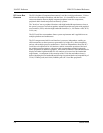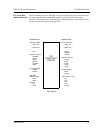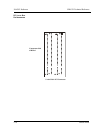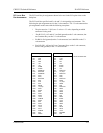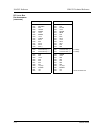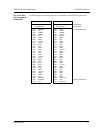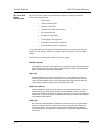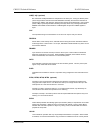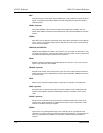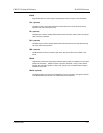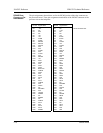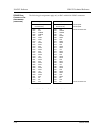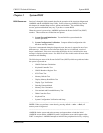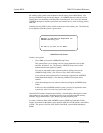
ISA/PCI ReferenceCBI/CGI Technical Reference
Chassis Plans 2-15
C/BE[7::4]# (optional)
Bus Command and Byte Enables are multiplexed on the same pins. During an address phase
(when using the DAC command and when REQ64# is asserted), the actual bus command is
transferred on C/BE[7::4]#; otherwise, these bits are reserved and indeterminate. During a data
phase, C/BE[7::4]# are byte enables indicating which byte lanes carry meaningful data when
REQ64# and ACK64# are both asserted. C/BE4# applies to byte4 and C/BE7# applies to
byte7.
CLK
Clock provides timing for all transactions on PCI and is an input to every PCI device.
DEVSEL#
Device Select, when actively driven, indicates that the driving device has decoded its address
as the target of the current access. As an input, DEVSEL# indicates whether any device on the
bus has been selected.
FRAME#
Cycle Frame is an interface control pin which is driven by the current master to indicate the
beginning and duration of an access. When FRAME# is asserted, data transfers continue;
when it is deasserted, the transaction is in the final data phase.
GNT#
Grant indicates to the agent that access to the bus has been granted. This is a point to point
signal. Every master has its own GNT#.
IDSEL
Initialization Device Select is used as a chip select during configuration read and write transac-
tions.
INTA#, INTB#, INTC#, INTD# (optional)
Interrupts on PCI are optional and defined as "level sensitive," asserted low (negative true),
using open drain output drivers. PCI defines one interrupt for a single function and up to four
interrupt lines for a multi-function device or connector.
Interrupt A is used to request an interrupt. For a single function device, only INTA# may be
used, while the other three interrupt lines have no meaning.
Interrupt B, Interrupt C and Interrupt D are used to request additional interrupts and only have
meaning on a multi-function device.
IRDY#
Initiator Ready indicates the initiating agent’s (bus master’s) ability to complete the current data
phase of the transaction. IRDY# is used in conjunction with TRDY#. During a write, IRDY#
indicates that valid data is present on AD[31::0]. During a read, it indicates that the master is
prepared to accept data.
LOCK#
Lock indicates an operation that may require multiple transactions to complete. When LOCK#
is asserted, non-exclusive transactions may proceed to an address that is not currently locked.




